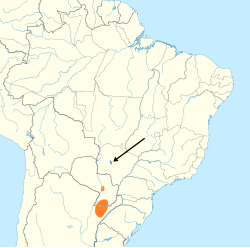| Ibera seedeater | |
|---|---|
 | |
| Scientific classification | |
| Kingdom: | Animalia |
| Phylum: | Chordata |
| Class: | Aves |
| Order: | Passeriformes |
| Family: | Thraupidae |
| Genus: | Sporophila |
| Species: | S. iberaensis |
| Binomial name | |
| Sporophila iberaensis Di Giacomo & Kopuchian, 2016 | |
 | |
The Ibera seedeater (Sporophila iberaensis) is a species of bird in the family Thraupidae, formerly included within the family of American sparrows (Emberizidae).
Contents
It is found in the Iberá Wetlands. It was described in 2016. [2]
